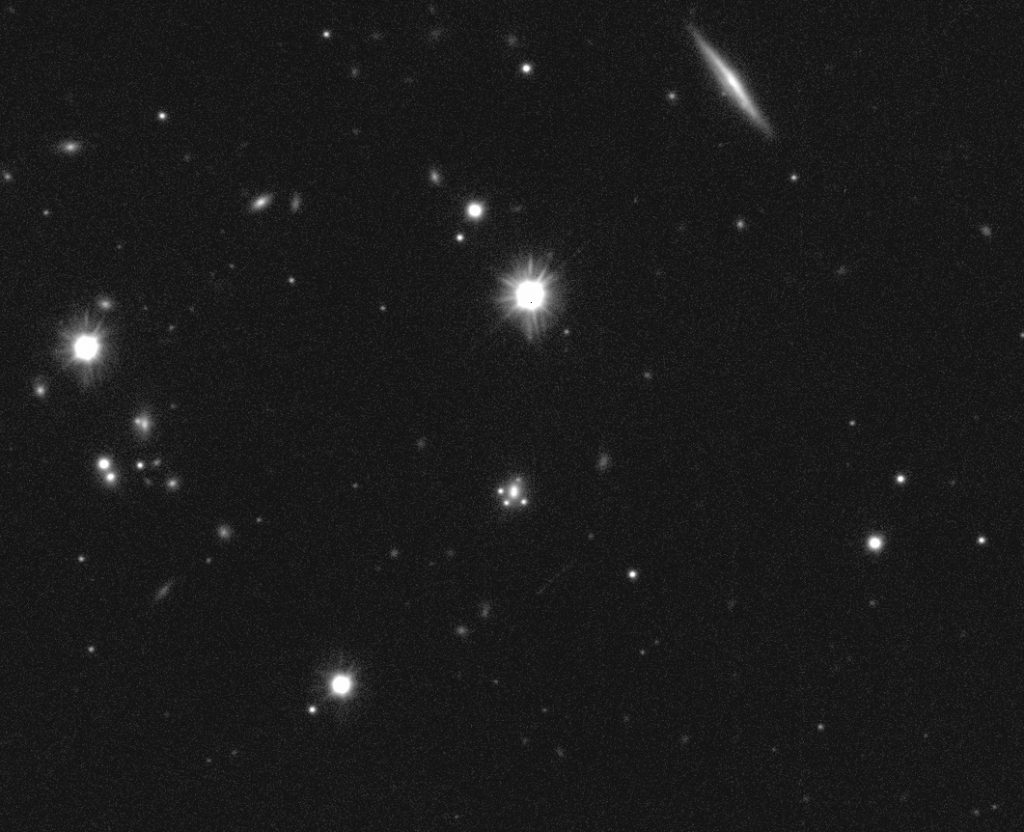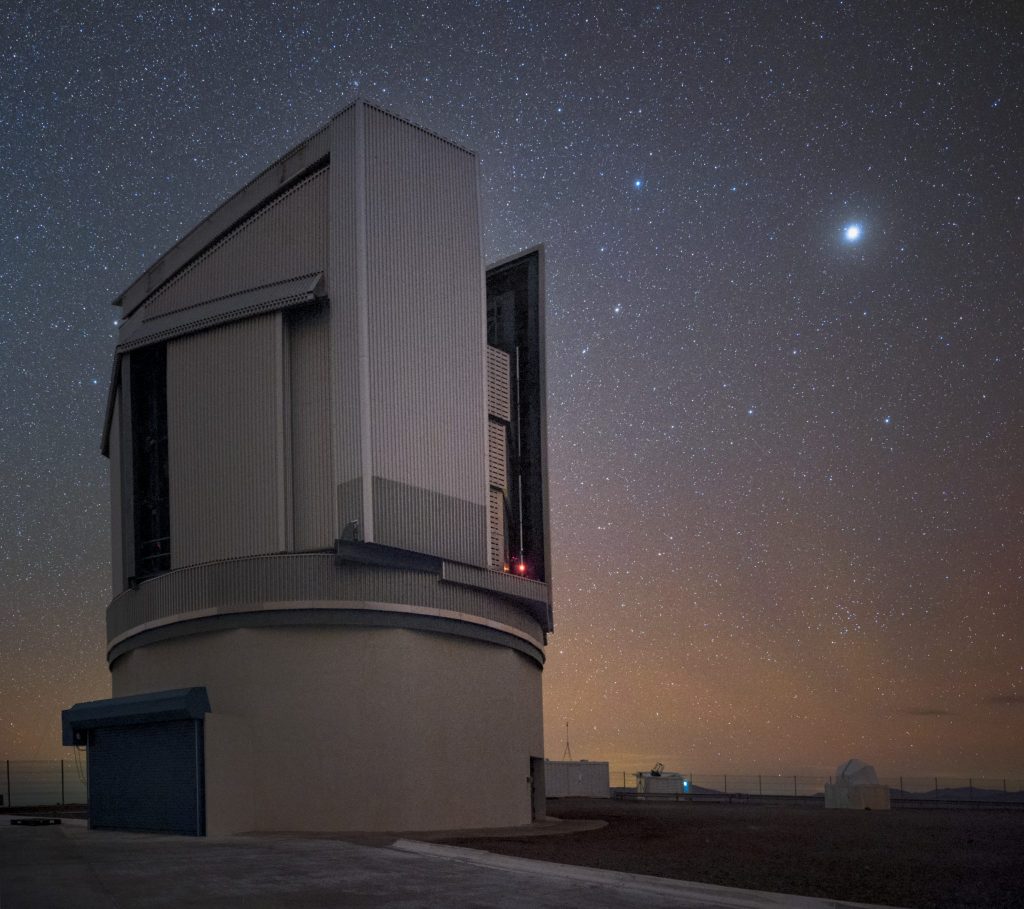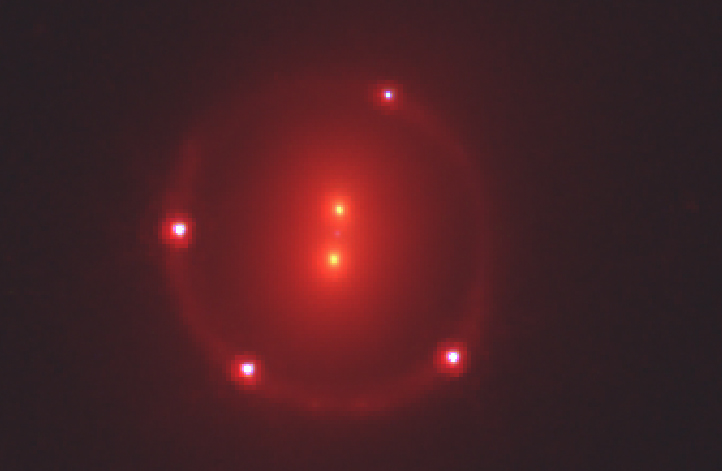The EPFL Laboratory of Astrophysics (LASTRO) is involved in an international research project to measure the Hubble constant, also known as the expansion rate of the Universe. The methods rely on gravitational lenses and the measurement of time delays between multiple images of quasars that are billions of light years away.
One such recent image is of a lensed quasar known simply as 2M1310-1714. Martin Millon, a PhD student at LASTRO is here to explain more.

Can you briefly explain what is the Hubble constant?
The Hubble Constant is the expansion rate of the Universe as we measure it today. As the Universe expands, all of the galaxies that we observe are receding away from us. We can measure the expansion rate of the Universe by measuring the galaxy’s distance and the velocity at which it is receding.
What is gravitational lensing?
A gravitational lens is formed when light from a luminous object is distorted by the gravity of one or more massive galaxies in the foreground, so much so that multiple mirage images of the same object appear when observed from a telescope.
What exactly does the image of 2M1310-1714 show?
In the image above of 2M1310-1714, there are two very large galaxies in front of a quasar. The gravitational lensing effect distorts our view of the quasar, creating four different views of it. The background quasar (imaged 4 times) lies around 10 billion light years away while the 2 lens galaxies in the foreground are a bit closer (around 3 billion light years).
The image was taken over a 5-minute exposure. We are observing this on a daily basis over a season of around 8 months during the year in order to identify any changes, such as variations in luminosity that will appear one after the other in the 4 multiple images, because the path taken by the light can be slightly shorter or longer. Therefore, we observe the same variation but delayed in time, and by measuring this time delay we can infer the Hubble constant.
Which telescope was used to generate the image?
The image was taken by the VLT survey telescope, a 2.6m telescope in Paranal, Chile. This is an image taken in excellent viewing conditions from the ground. We also study images of the same gravitational lens taken from the Hubble Space Telescope.

How does this image help measure the Hubble Constant?
There are 3 steps involved in measuring the Hubble Constant:
- Measure the time delay, such as the example above
- Model the mass of the galaxy, using the high-resolution HST image
- Account for any gravitational influence of the different galaxies surrounding the lens
As well as accessing data from several observatories on the ground and the Hubble Space Telescope, the data analysis is very resource-intensive. LASTRO is collaborating closely with scientists in Belgium, Denmark, Germany, Italy, Japan, the Netherlands, the UK, and the US in order to analyse the results.
How many of these are being observed by the LASTRO team
Time delay measurement is one of the areas of expertise at the EPFL Astrophysics lab, which benefits from year-long access to partner telescope observatories around the world. At present the team are making daily observations of around 10 specific lensed quasars from different observatory telescopes.
Why is it important?
The Hubble constant is really an observational check of the cosmological models and theory surrounding how the Universe was formed, what it contains and how it is expanding. Once we measure the Hubble constant, it allows us to test other cosmological models and theories of gravity that predict the expansion of the Universe.

For more information: